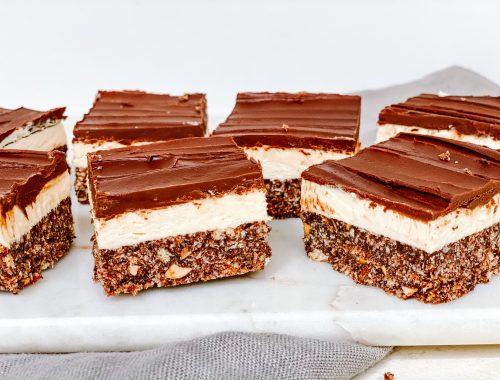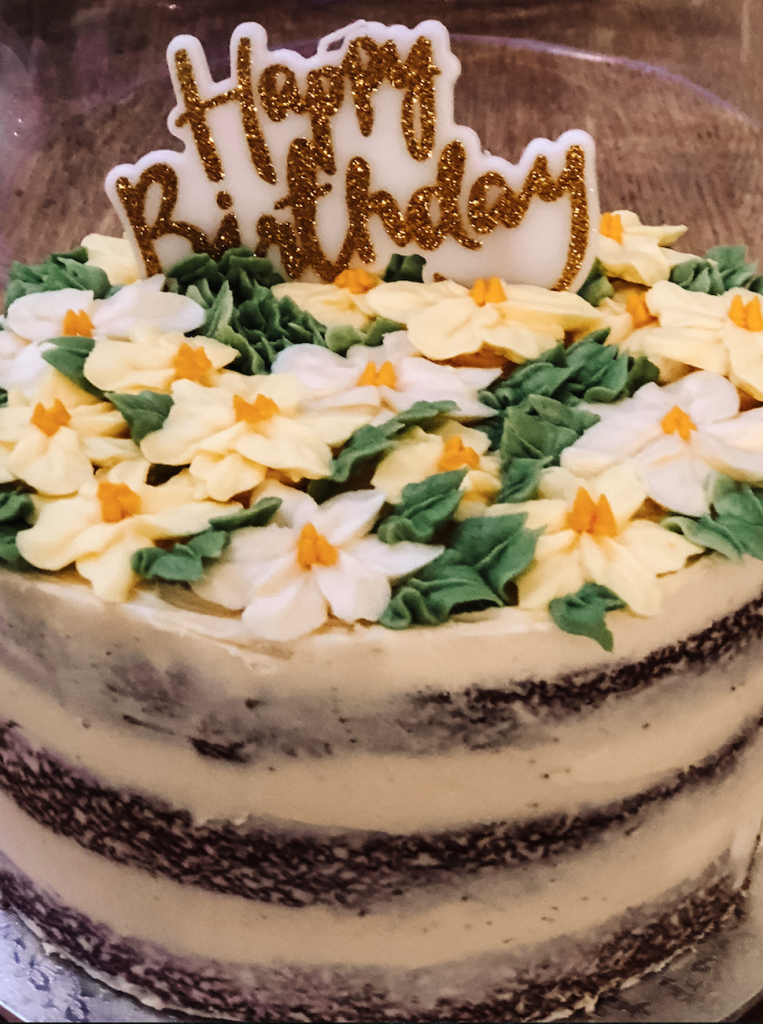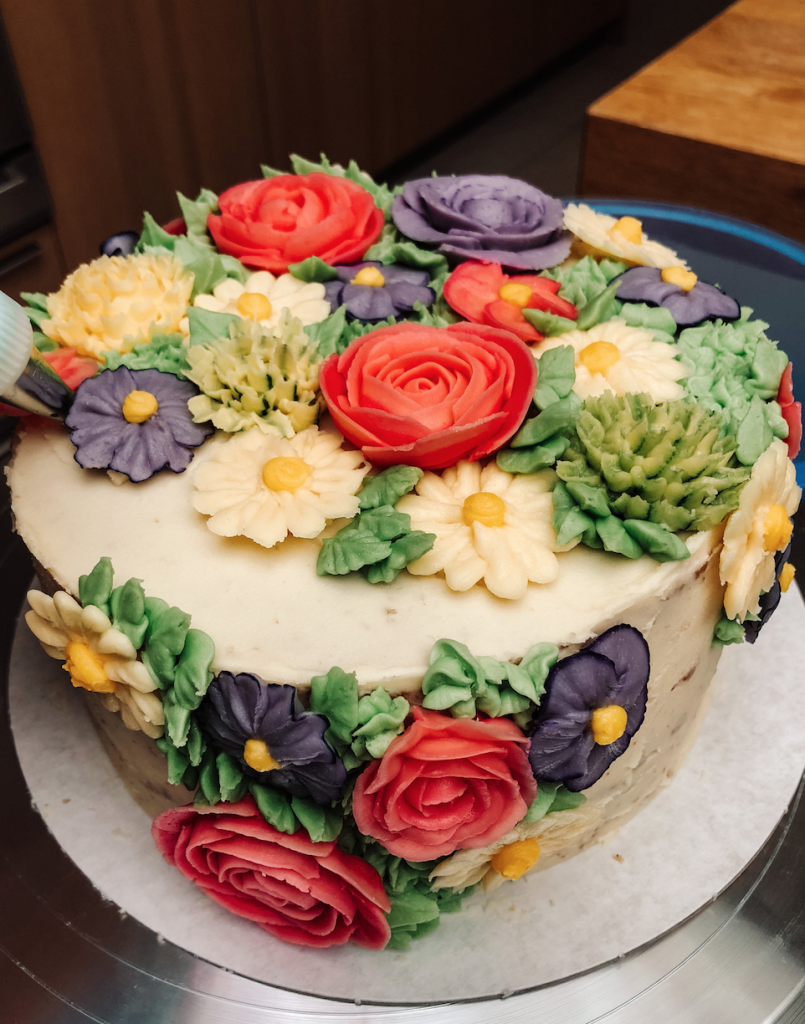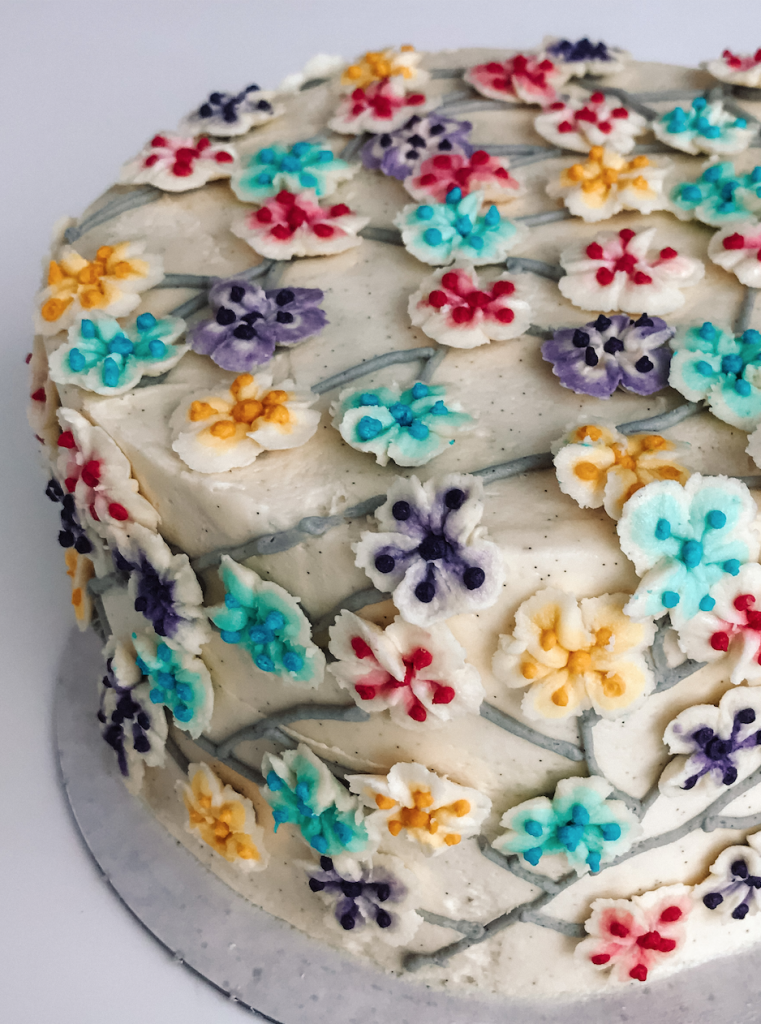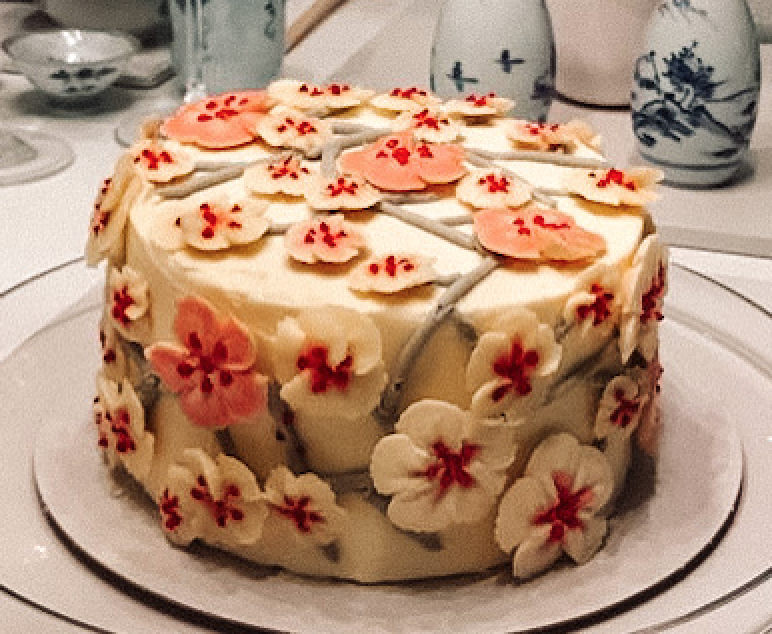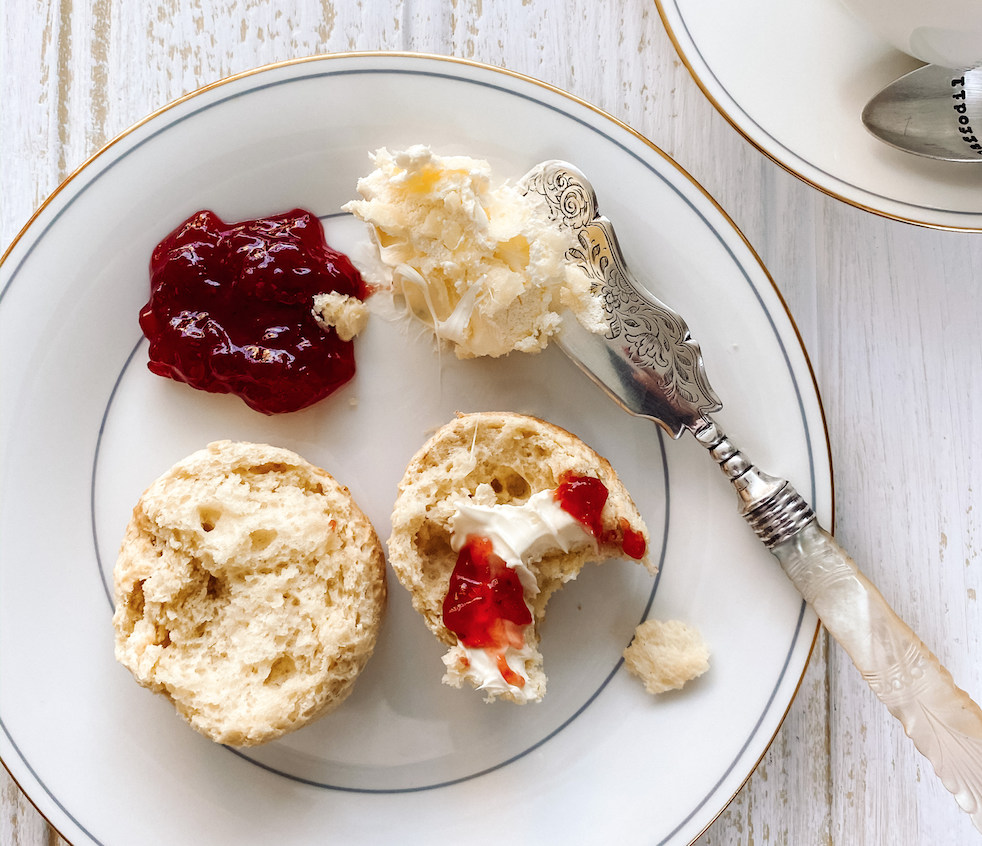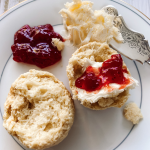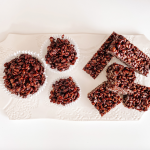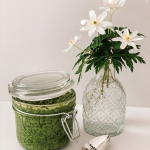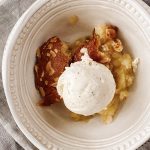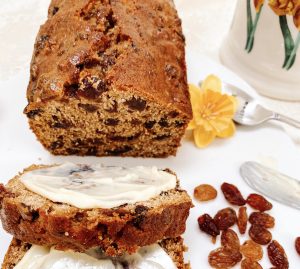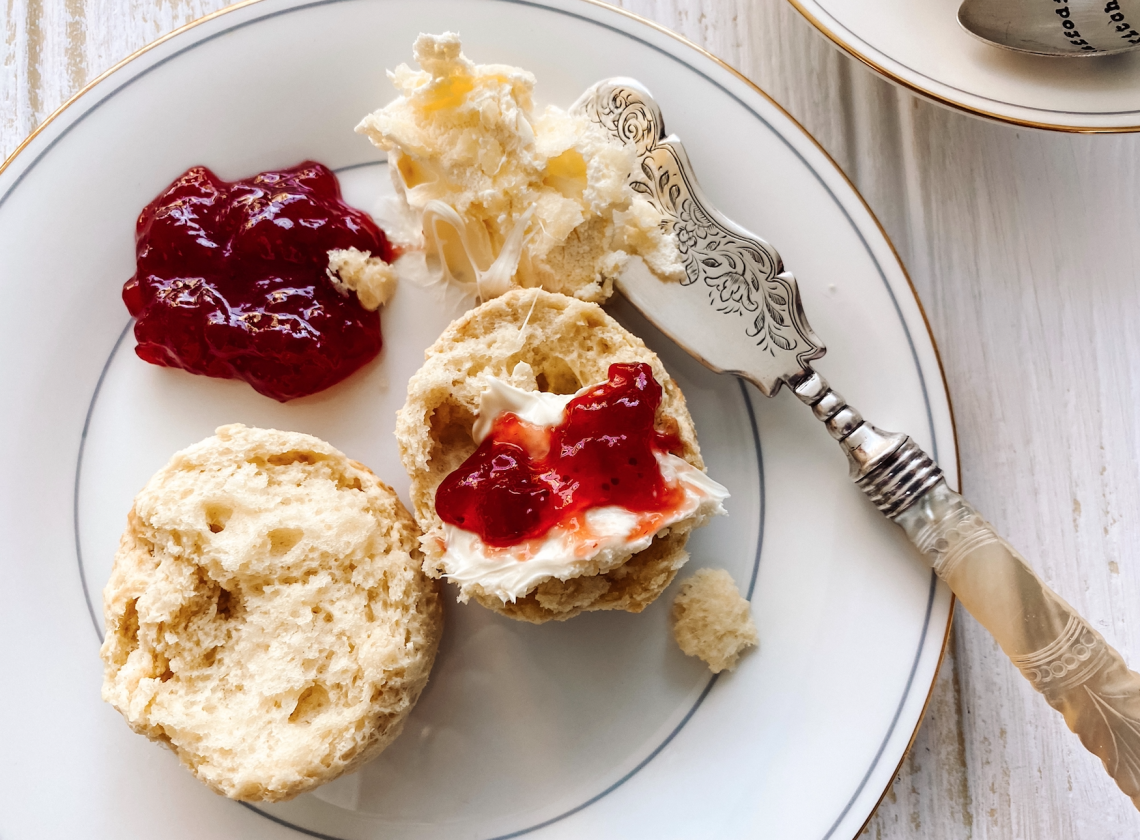
Scones
Our whole family is at home at the moment in line with the government guidelines on COVID 19. We are unable to go out apart from essential shopping, to walk the dog, or in Andrew’s case, to actually go to work and see his patients – although he is unable to operate at the moment until the specialist protective gear is available.
Last Saturday, our elder daughter, Charlotte, flew home early from travelling in New Zealand as advised. We picked her up very early from Heathrow Airport, just outside London, and decided to stop for some essential shopping on the way home. Perhaps not what you want after 36 hours travelling, but needs must! The shelves were pretty bare with minimal supplies of fresh fruit and vegetables, bread and eggs. Definitely no toilet roll!. There was, however, an abundance of clotted cream! This is an absolute essential (in my opinion) with scones and quite frankly it would have been rude not to buy some!

Charlotte and Arty 
Heathrow Airport 
Empty Shelves!
Emma, our younger daughter, is without doubt the best scone maker in the house and yesterday she made the most wonderful, light, fluffy scones which we ate warm with strawberry jam and clotted cream. They were divine! I am salivating thinking about them! There is a huge and real danger that our waistlines are all going to burst following these weeks at home. Eating (and drinking!) have taken on a much more important role in terms of distraction and pleasure. I literally have to stop myself making and hence eating cakes and cookies daily!

Emma in Switzerland over Christmas being photobombed by Arty! 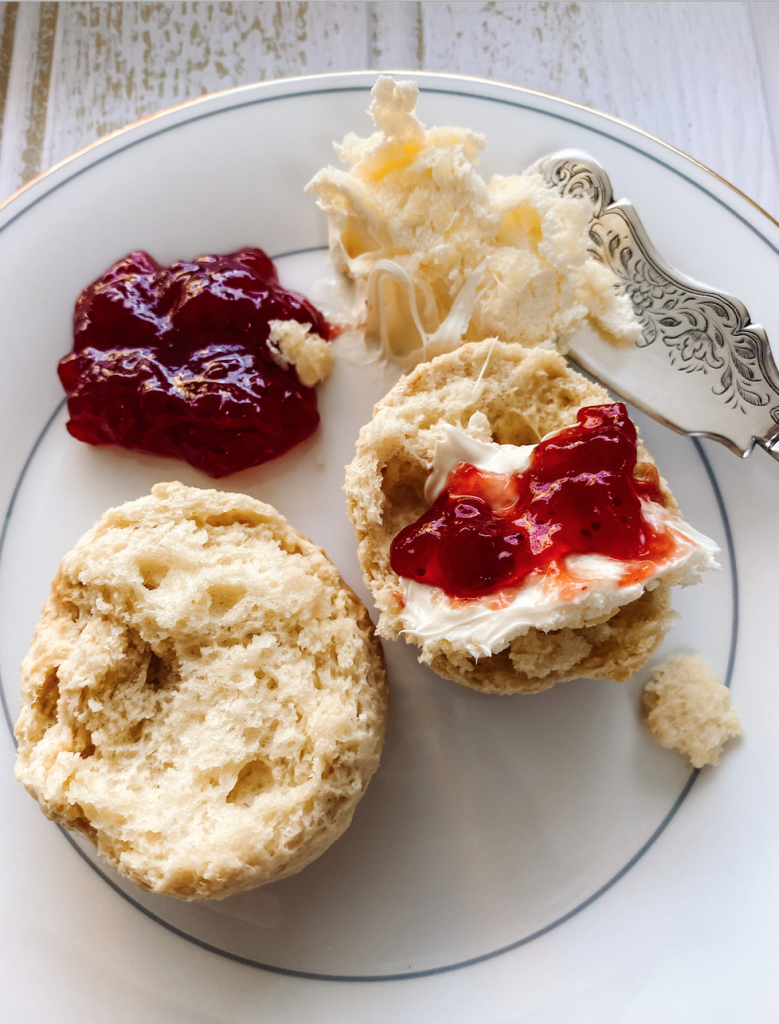
Emma loves to bake, particularly celebration cakes. Whilst home from medical school she has promised to show me how to make some of these beauties and has agreed to being photographed so I can share it on the blog. Watch this space!
Today, however it is all about scones! Although they are actually relatively easy to make and use only a few basic ingredients, they are also easy to ruin – too much handling of the dough, too much liquid, not enough liquid and they will be hard and dry. Follow this recipe and fingers crossed, yours will be light and fluffy too!
You can make scones either in the food processor or by hand. Personally I use a food processor but I have included instructions in the recipe to make them by hand as well.
Start off by collecting all your ingredients together. Preheat the oven and place a baking tray inside to heat up in the oven. Weigh the flour into your food processor and add the salt and baking powder. Pulse to mix. Tip in the cubes of cold butter and pulse until the mixture resembles fine breadcrumbs.
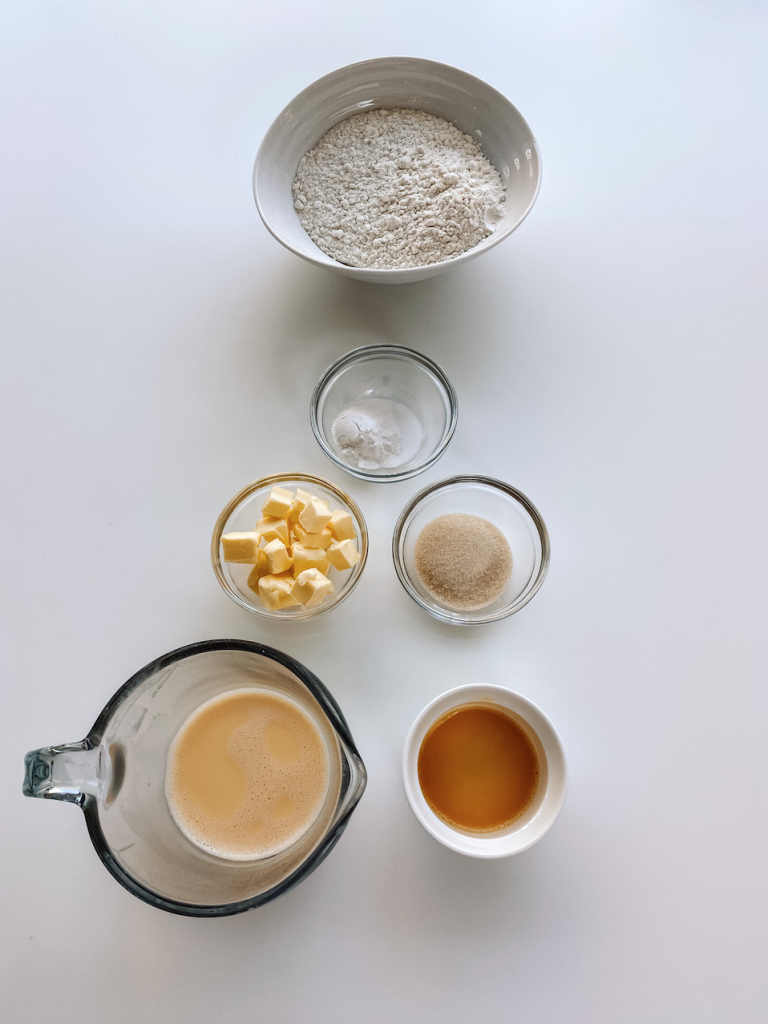
1 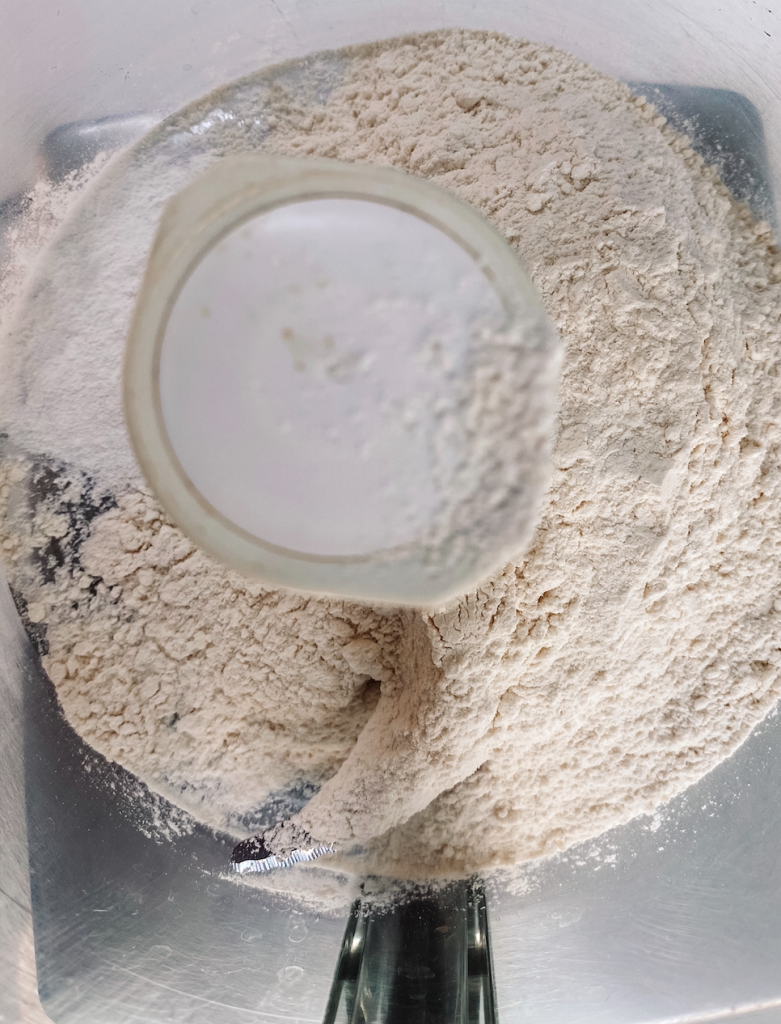
2 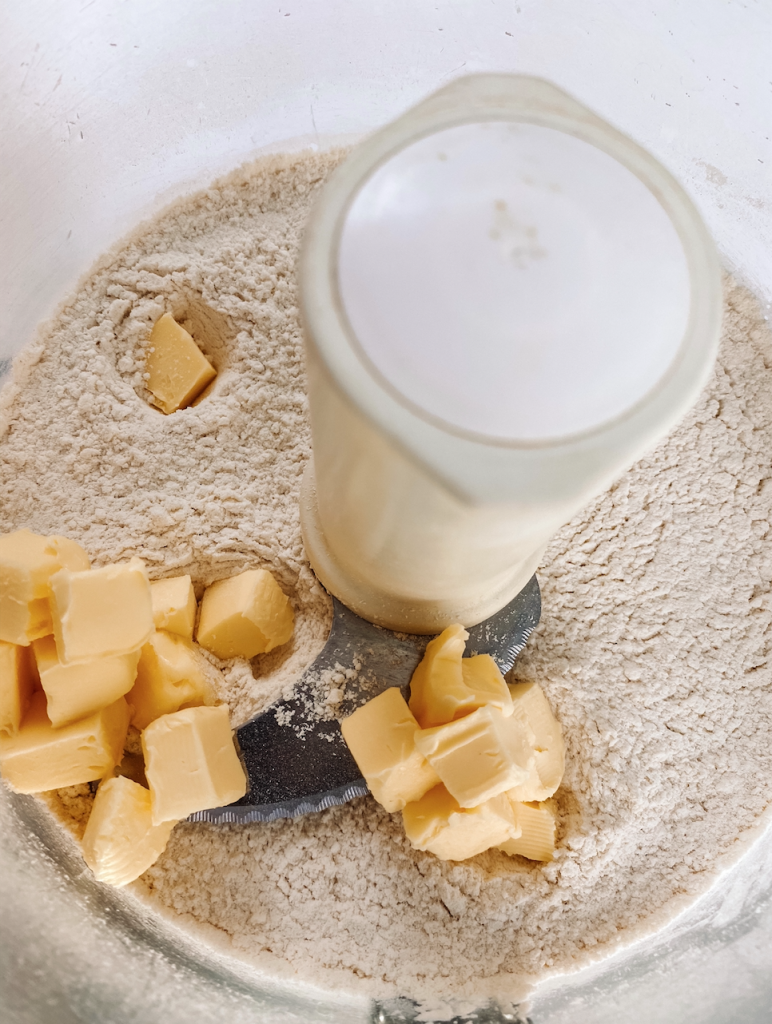
3 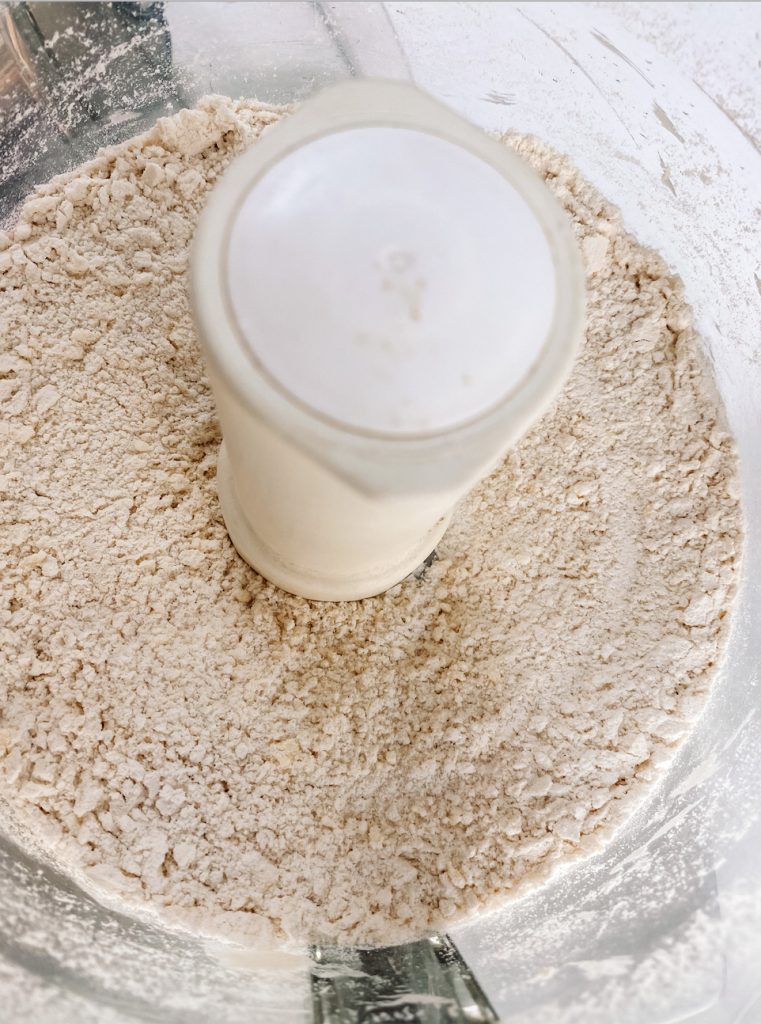
4 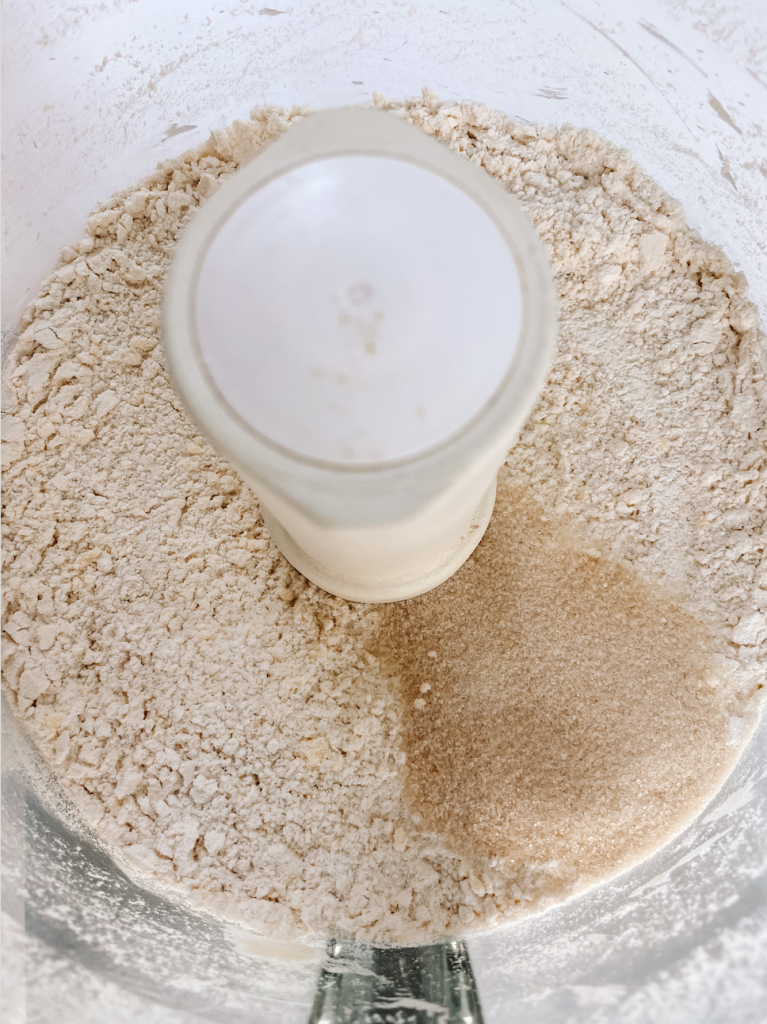
5 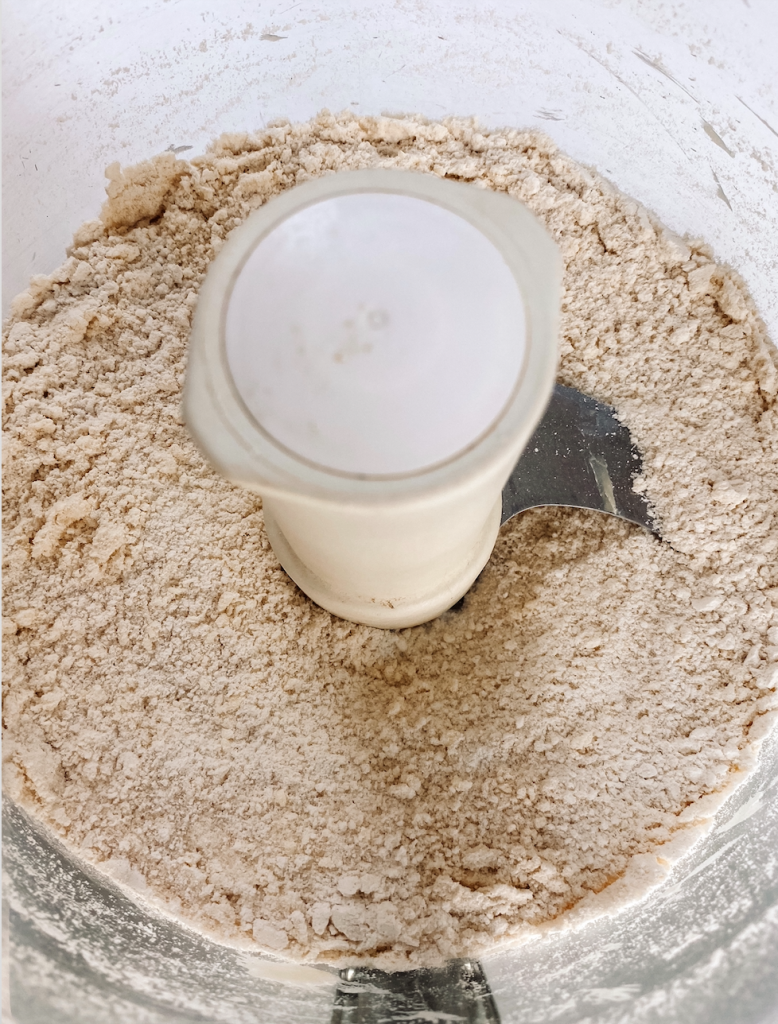
6
Beat the egg in a measuring jug and remove ½ tablespoon. Set on one side to use as a glaze on the scones before they go in the oven. Add milk to the egg to come to a total of 100ml. Stir to mix and pour the milk and egg mixture into the food processor and pulse until nearly mixed but not quite. Tip out onto your work surface, flour your hands and the work surface and very gently knead the dough only 2 or 3 times, to ensure it comes together into a ball. Work the dough as little as possible.
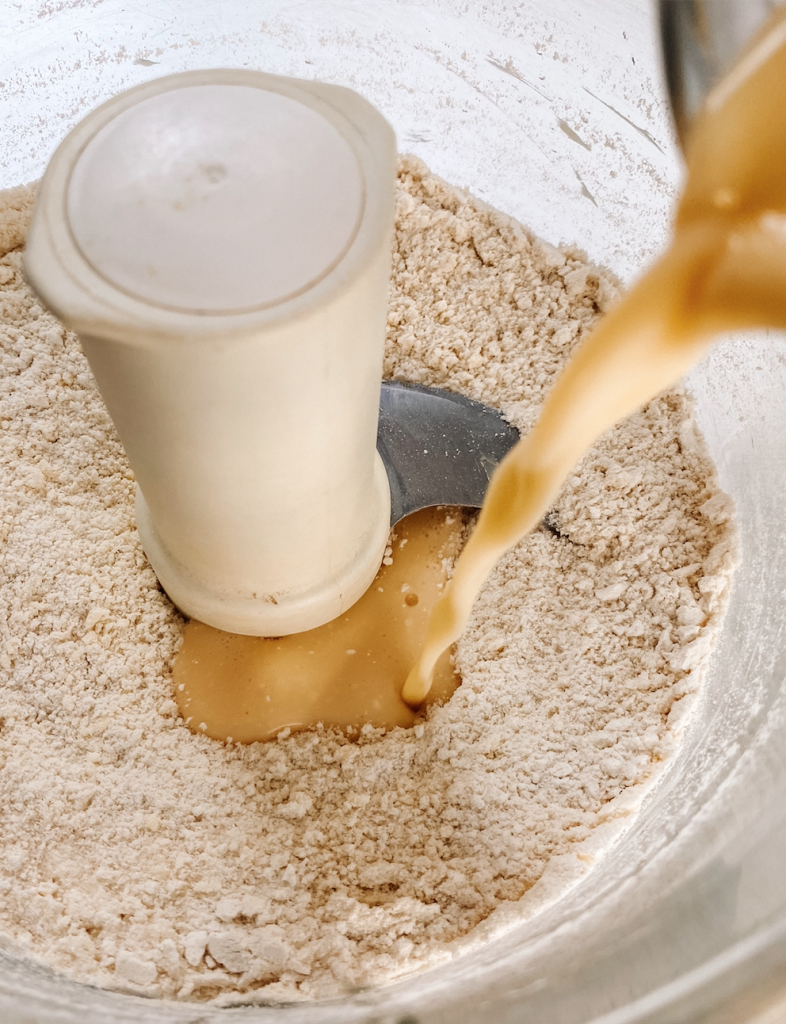
7 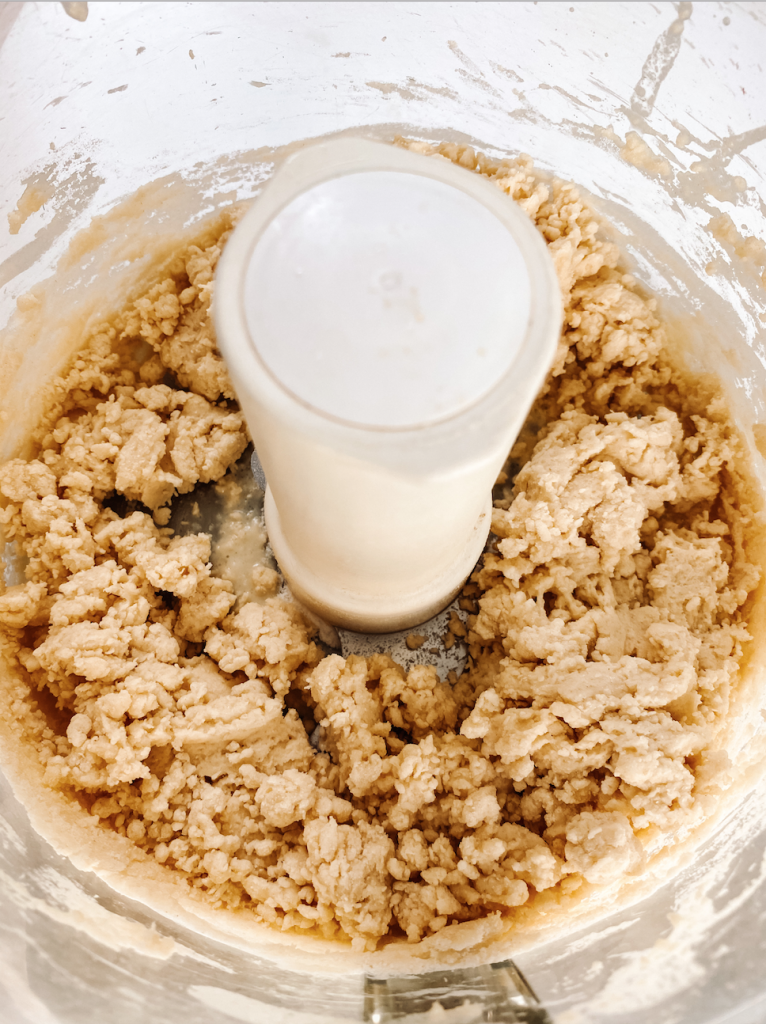
8 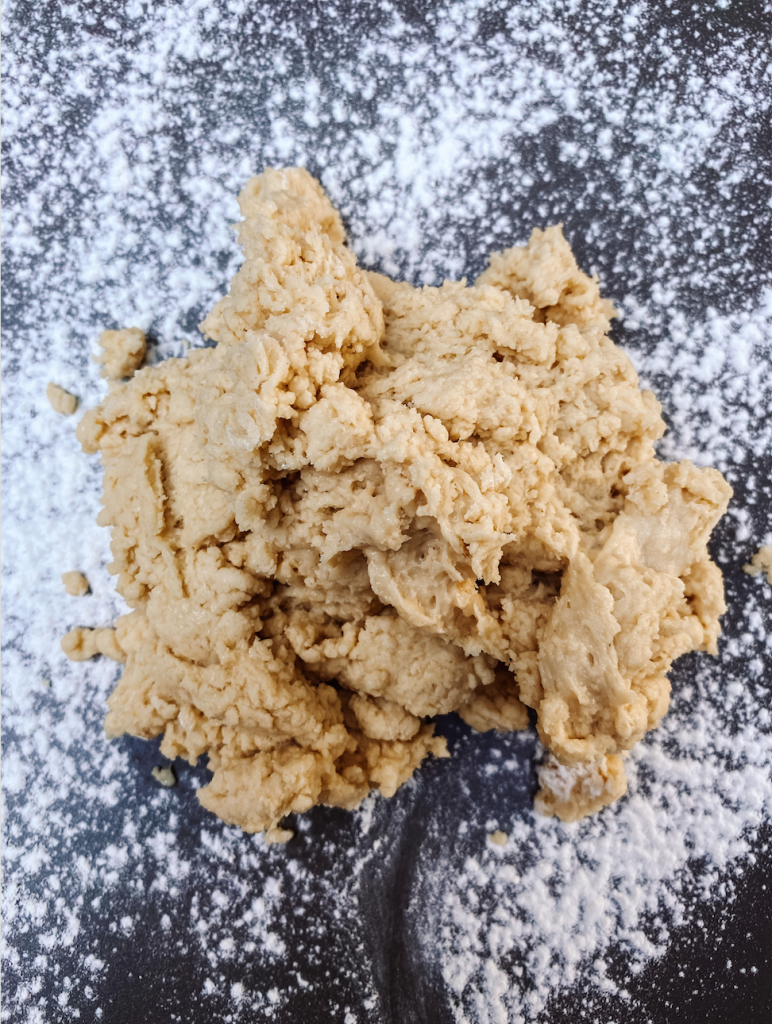
9 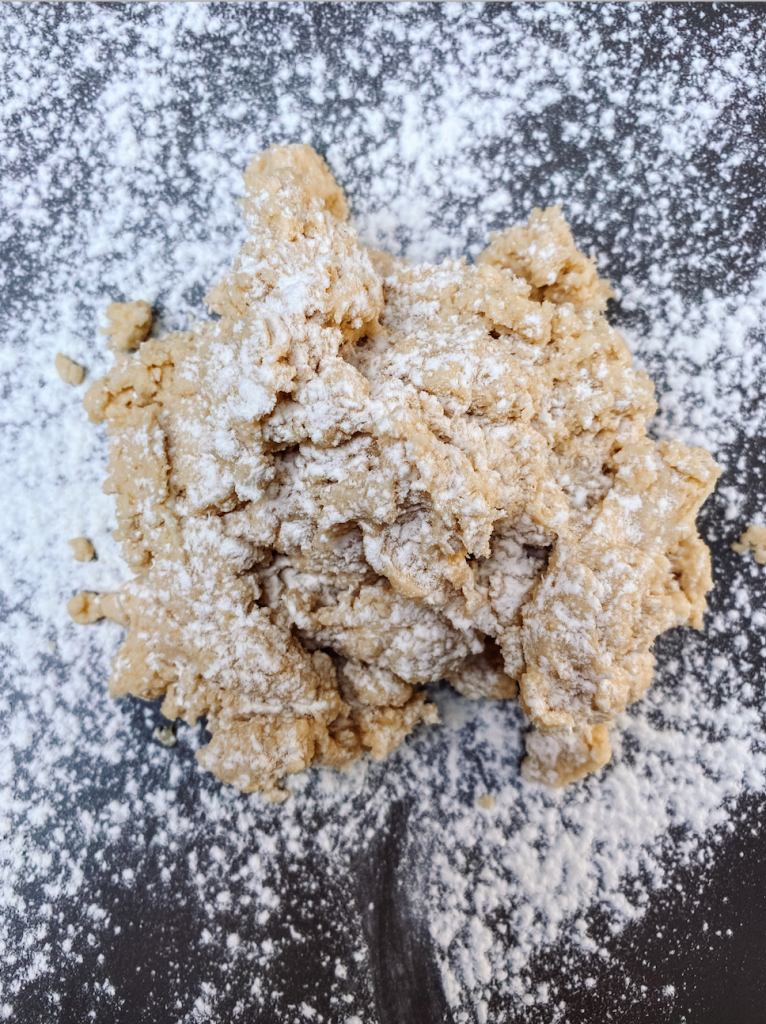
10 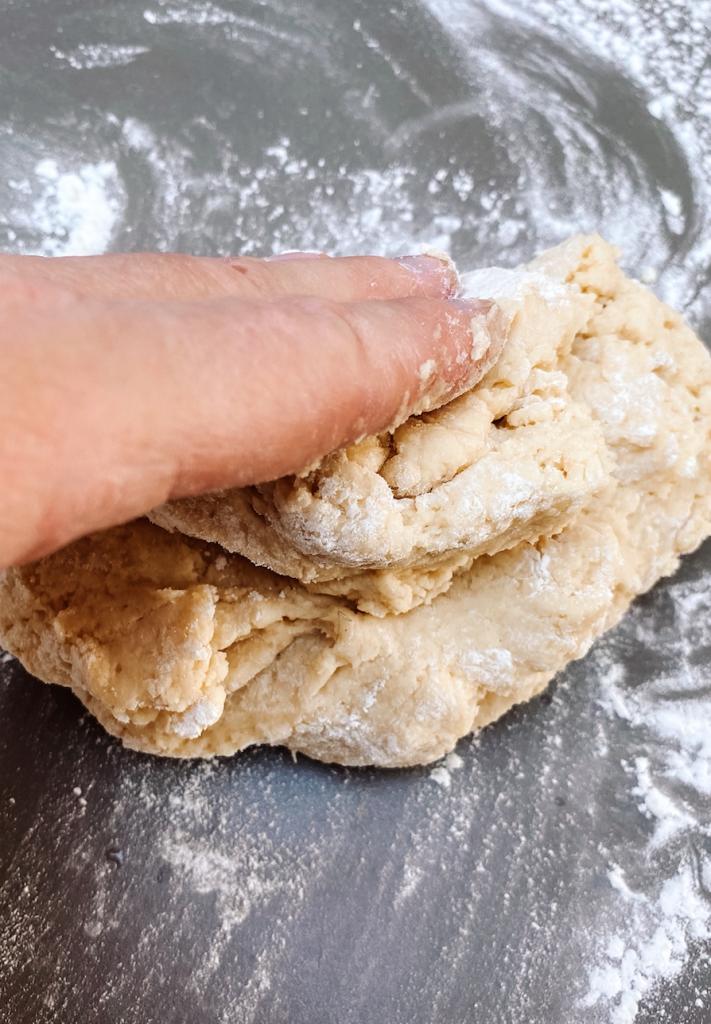
11 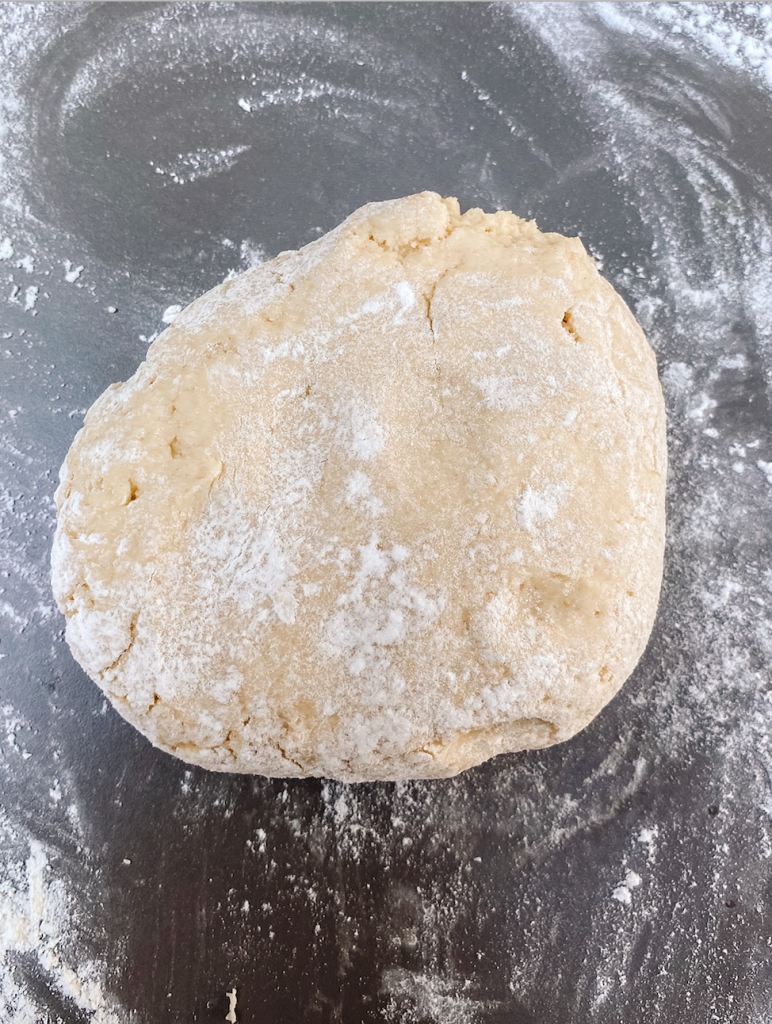
12
Use your hand to press the dough down to 3cms thick. Dip a 5cm plain cutter in flour and use to cut out as many scones as possible. I get 4 out of my first batch. Re-knead the remaining dough to bring it back together. Again, handle the dough as little as possible. Cut out the remaiming 3 scones remembering to flour the cutter inbetween to stop it sticking to the dough.
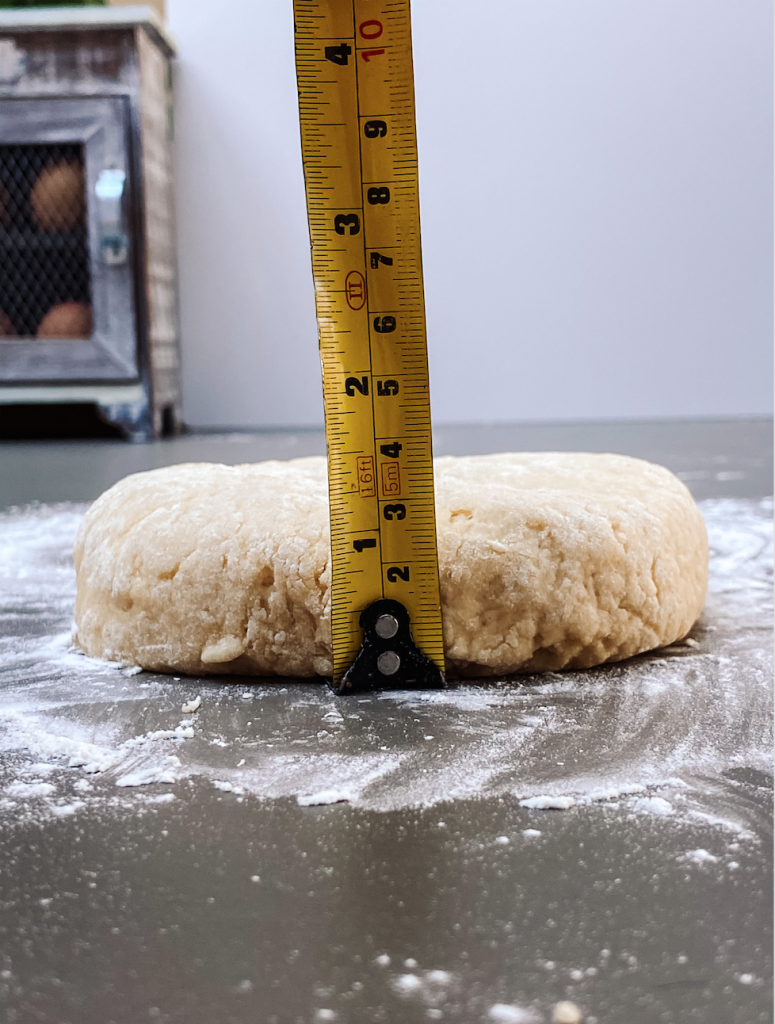
13 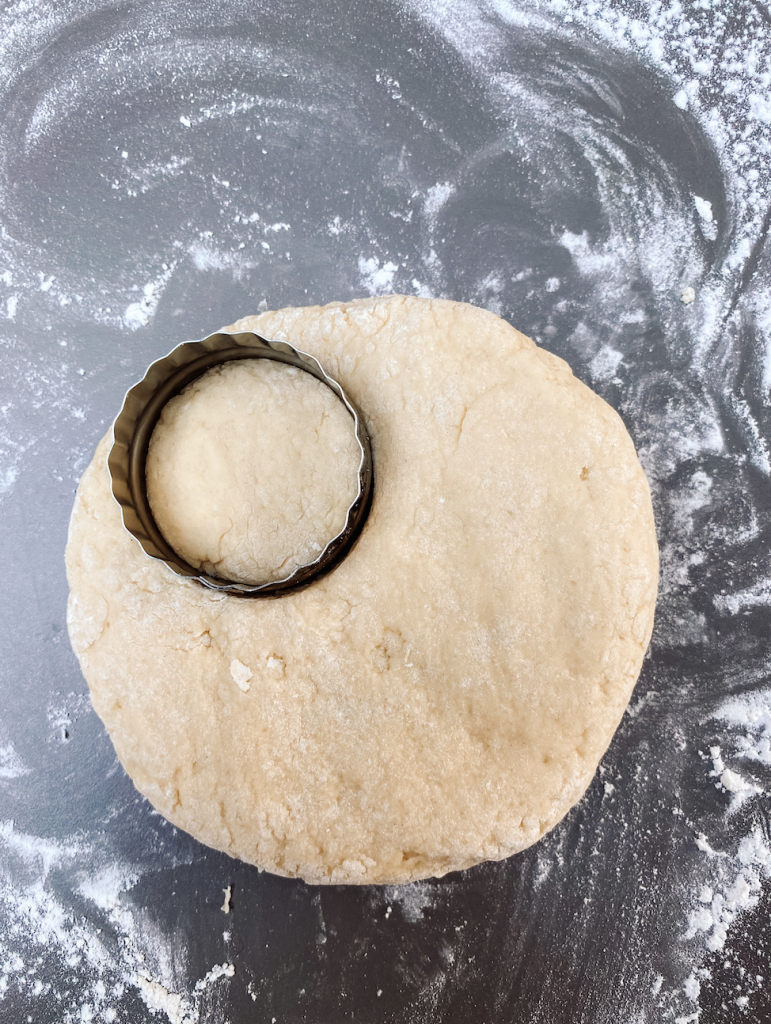
14 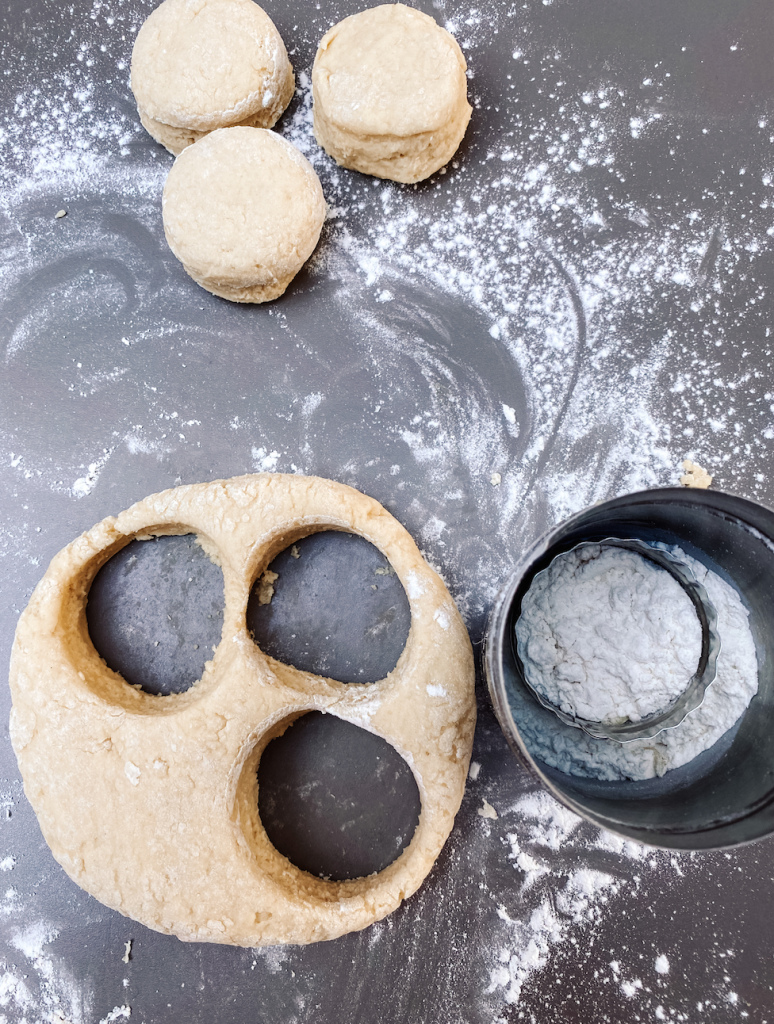
15
Brush the tops of the scones with egg wash. Take the hot baking tray out of the oven and place the scones directly onto the tray. There is no need to grease the tray. Cook for 8 – 10 minutes in the centre of the oven until cooked and the top is lightly browned.
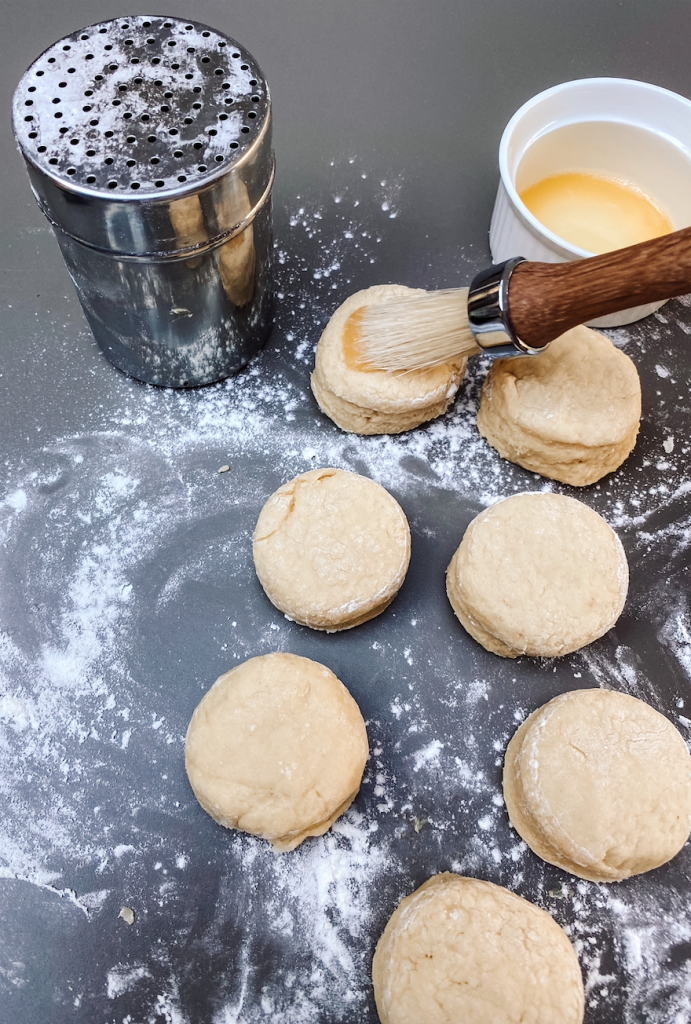
16 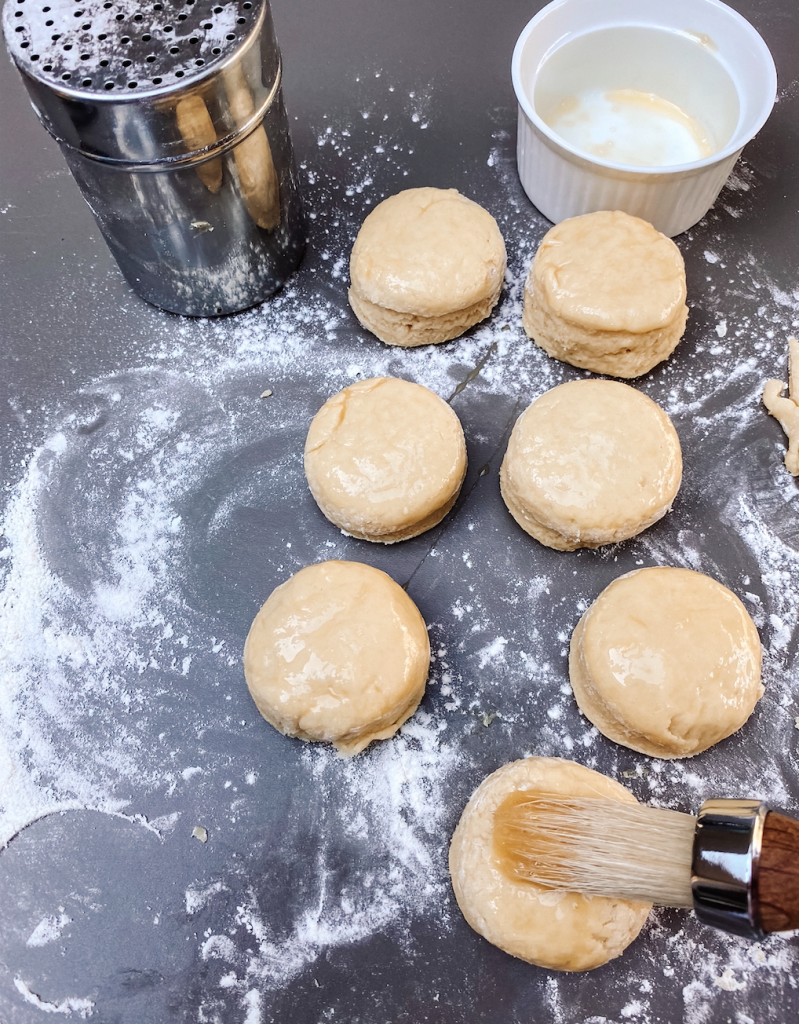
17 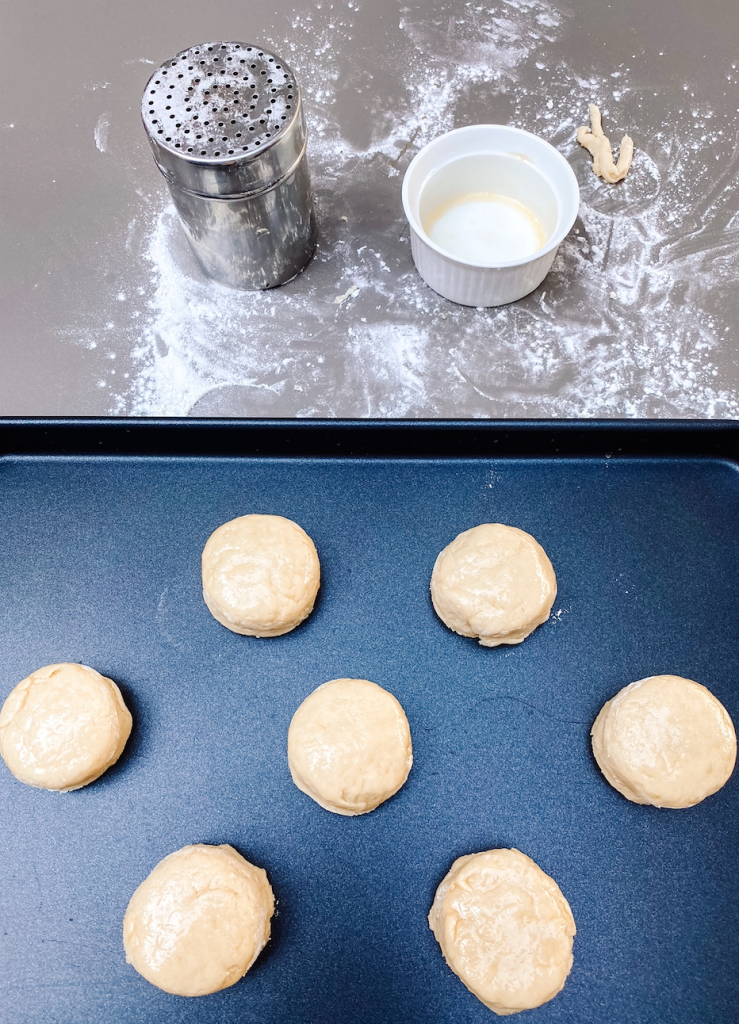
18
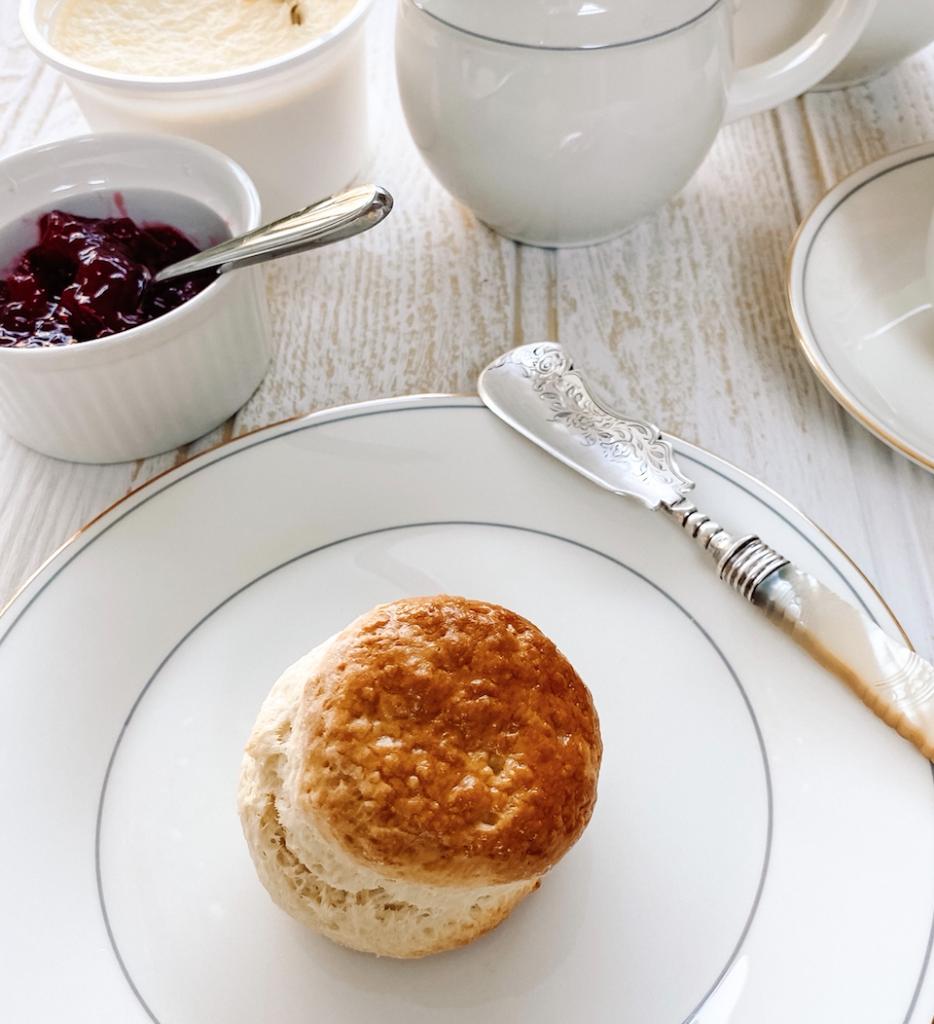
In the UK there is much debate about how scones should be eaten.
- Do you cut your scones in half or split them in half with your hands? I believe the correct way is using your hands. If your scones are warm and fresh this is certainly the easiest option, although you may struggle with scones which are not warm and soft.
- You should then use separate spoons to spoon some jam and cream on to your plate, next to your scone and not directly on your scone just yet.
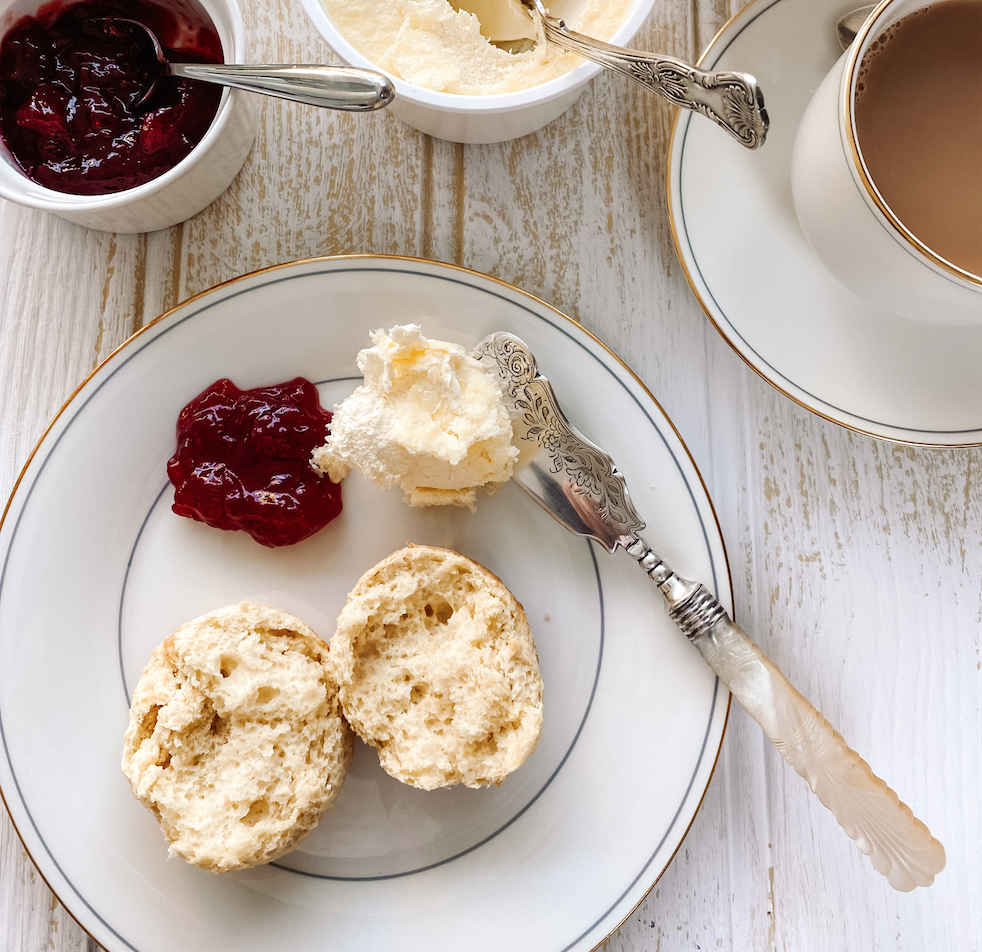
- The most contentious issue of all, do you put jam first and then cream or cream and then jam? I am firmly in the cream first and then jam camp. I believe the Queen prefers jam and then cream! Cream teas are sold all over the UK but Devon and Cornwall have really made them their own. Apparently in Devon, they prefer cream and then jam and in Cornwall, jam and then cream. Take your pick – it seems both are correct!
- Having decided which way round you want to eat your cream and jam, you then use your knife to spread one and then the other on a part of a scone half. You can then take one or two bites and spread the remainder of the scone with more cream and jam before you eat the rest. I like very generous portions of cream and jam and if you spread the entire half with the cream and jam before you bite into it, you are bound to end up with a good portion on your face – trust me, I speak from experience!
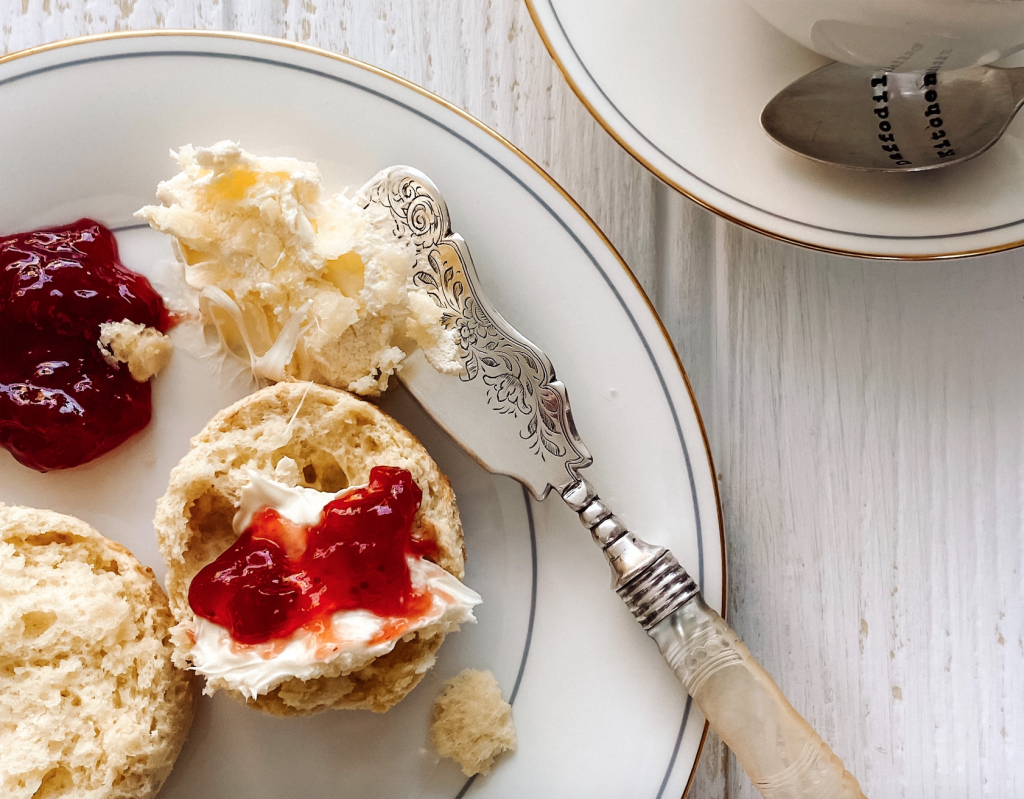
- Never, never, never should you sandwich the halves together and eat it like a beef burger. To my utter horror, my husband tried to do this in a rather posh London hotel, many years ago. Luckily he stopped when he realised that A) I was part glaring and part giggling at him and B) it was far too big and that method was never going to work! Trauma averted, I am happy to say he is now a well educated scone eater and has impeccable ‘scone’ etiquette every time.
- The final scone issue which also causes much debate is pronunciation! Is it scone as in gone or scone as in bone? To me it has always been scone as in gone. I did a little research and it seems the folks ‘up north’ and in Scotland are more likely to say scone as in bone and as you go south it morphs into scone as in gone! Interestingly in London the pronunciation is pretty much split 50:50. As with the cream and jam debate, it seems there are two correct answers!
And finally:
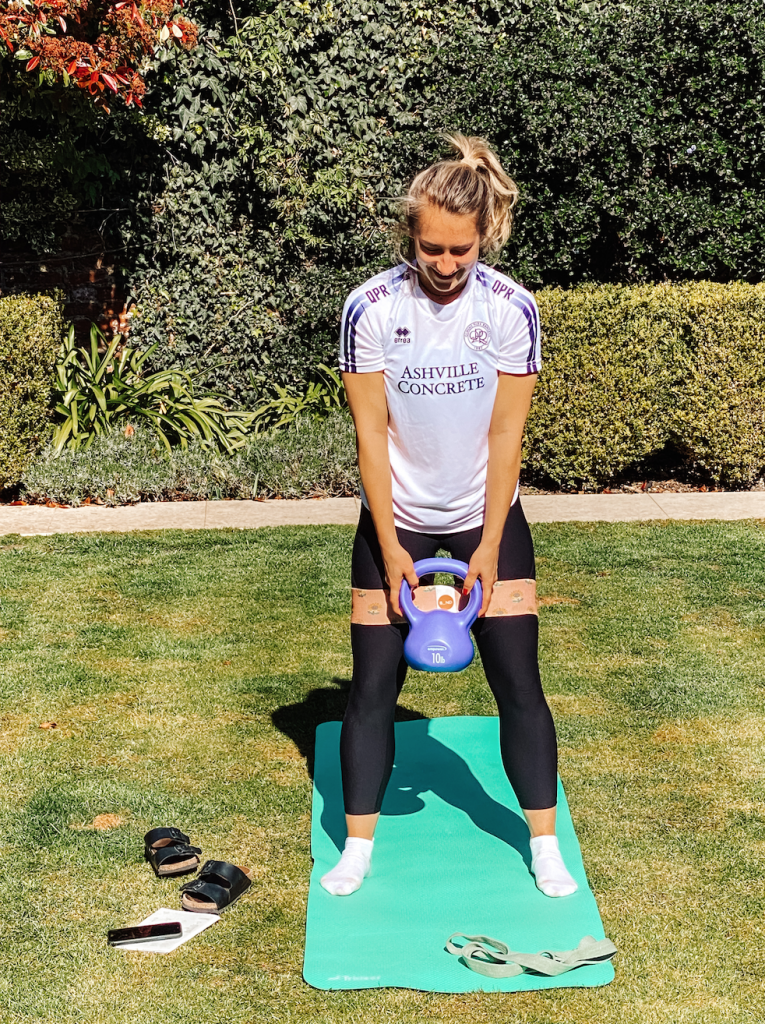
Charlotte doing a pre-scone workout! 
The cat who got the cream – literally. Naughty girl!
Made this recipe?
If you make this recipe, do please tag me on instagram @daffodil_kitchen. You could also leave a comment in the box directly below the recipe.
Scones
Fluffy, soft, melt in your mouth warm scones served with clotted cream and strawberry jam
Ingredients
- 180g plainall-purpose flour, plus more for dusting
-
2 teaspoons baking powder
-
⅛ teaspoon salt
-
50g cold unsalted butter, cut into small cubes
- 20g/1½ tablespoons caster sugar
- 1 egg, beaten well
-
Circa 65ml – 75ml milk
-
½ tablespoon beaten egg, to glaze
To serve:
- Lashings of clotted cream (or whipped cream or butter if you have to!)
- Lots of strawberry jam
Instructions
Method
-
Preheat oven to Fan Oven 200°C /220°C/425°F/Gas 7 and place a baking tray in the oven to heat up.
-
Measure the flour, baking powder and salt into a food processor or mixing bowl and pulse/stir to mix.
-
Either:
a) add the butter to the food processor and pulse until the butter and flour resemble fine breadcrumbs, or
b) add the butter to the flour in the mixing bowl and rub it into the flour with your fingertips until it resembles fine breadcrumbs.
-
Add the sugar to the butter and flour and either pulse or stir to mix
-
Beat the egg in a measuring jug and remove ½ tablespoon. Set on one side to use as a glaze on the scones before they go in the oven.
-
Add milk to the egg to come to a total of 100ml. Stir to mix
-
Either:
a) pour the milk and egg mixture into the food processor and pulse until nearly mixed but not quite.
b) make a well in the centre of the flour mix and pour in the milk and egg mixture. Use a metal knife to stir until nearly mixed but not quite.
-
Tip out onto your work surface and bring together genty with your hands.
-
Flour your hands and the work surface and very gently knead the dough only 2 or 3 times, to ensure it comes together into a ball. Work the dough as little as possible.
-
Use your hand to press the dough down to 3cms thick. Dip a 5cm plain cutter in flour and use to cut out as many scones as possible. I get 4 out of my first batch.
-
Re-knead the dough to bring it back together. Again, handle the dough as little as possible. Cut out the remaiming 3 scones remembering to flour the cutter inbetween to stop it sticking to the dough.
-
Brush the tops of the scones with egg wash.
-
Take the hot baking tray out of the oven and place the scones directly onto the tray. There is no need to grease the tray.
-
Cook for 8 – 10 minutes in the centre of the oven until cooked and the top is lightly browned.
-
Ideally serve as soon as they are cooked with lashings of clotted cream, strawberry jam and of course, a hot cup of tea!
Recipe Notes
Equipment:
- Baking tray
- Kitchen scales and measuring spoons
- Food processor or mixing bowl and metal knife
- Measuring jug
- 5cm round pastry/scone cutter
Storing scones: scones are best served on the day of baking. However, if you still have some left over the following day, simply re-heat in an oven preheated to Fan Oven 140C /160C/325F/Gas 3 for 3 minutes.
Freezing scones: if you want to freeze them, allow them to cool completely, cover and freeze as soon as possible for up to 3 months. Defrost and re-heat in an oven preheated to Fan Oven 140C /160C/325F/Gas 3 for 3 minutes.
This recipe is adapted from a recipe by Jane Hornby on bbcgoodfood.com.
You May Also Like
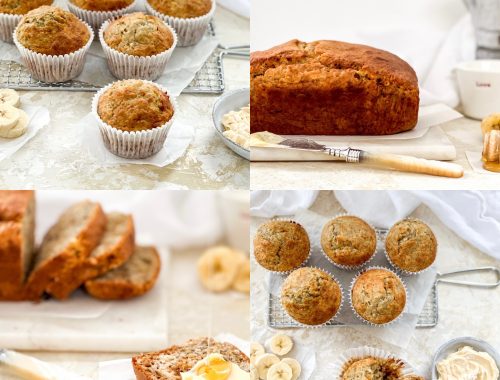
Banana Muffins/Banana Bread – Core Recipe
4th January 2020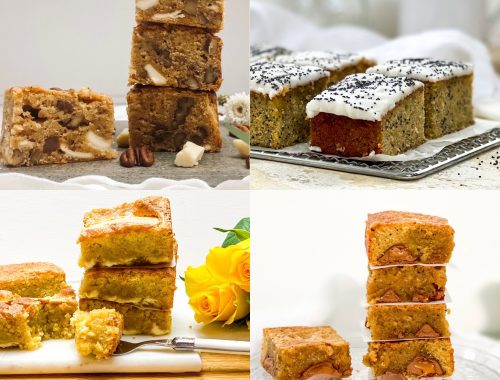
Daffodil Blondies – Core Recipe
14th October 2021